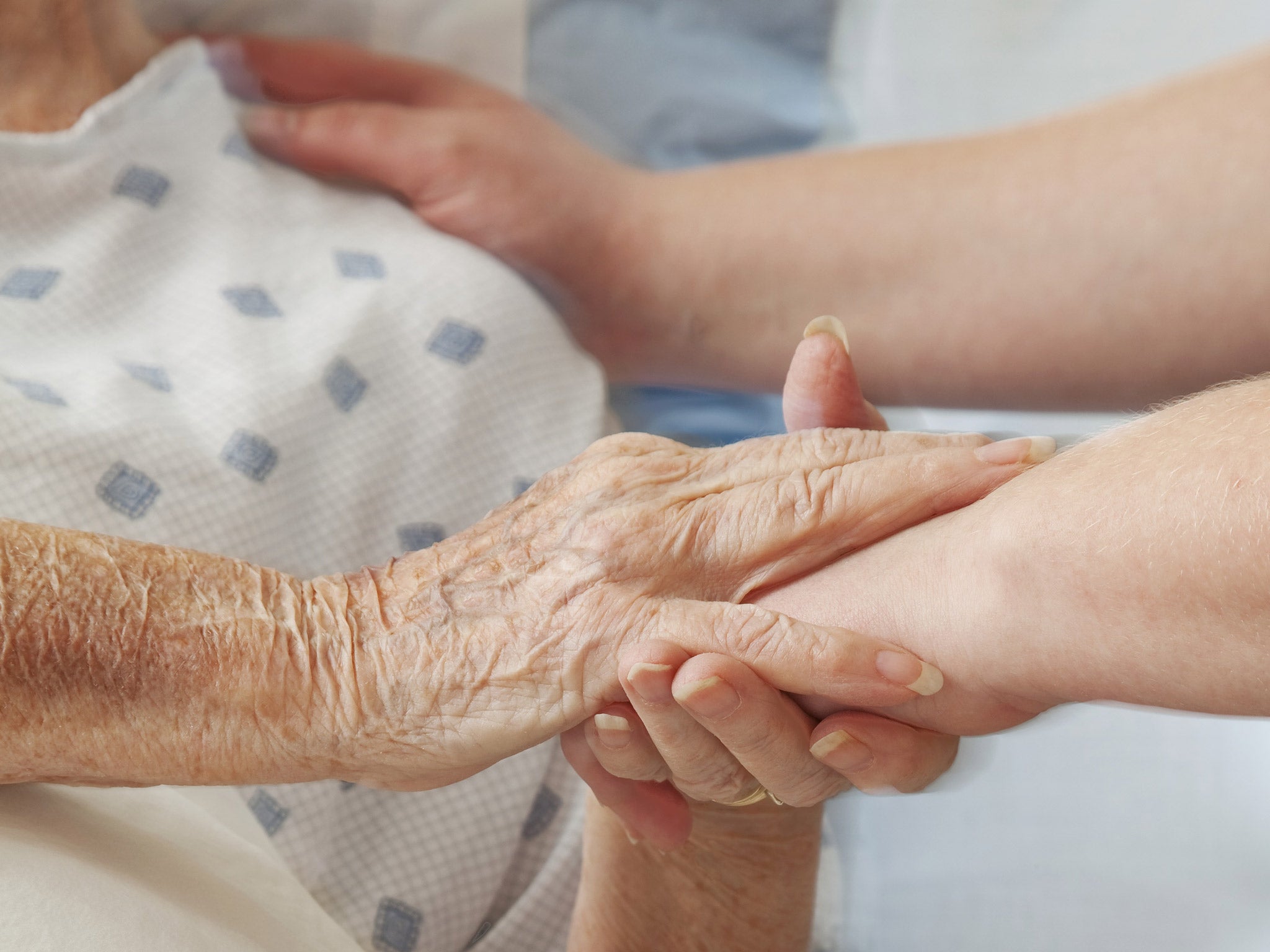Elderly people put at risk as watchdog fails to act on warnings of 'fatally negligent' care homes
Exclusive: Reports fail to trigger inspections by the Care Quality Commission

The lives of vulnerable care home residents were put at risk because England’s healthcare regulator failed to act promptly on official warnings about fatally negligent standards, an investigation for The Independent reveals.
Coroners’ courts have identified more than 20 deaths of care home residents in the past two years that could happen again without changes in practice.
Yet in more than half of these cases, research by the Bureau of Investigative Journalism has found, these reports failed to trigger inspections by the Care Quality Commission (CQC).
The commission has admitted its response to the warnings had “not always been consistent” and was working to improve the situation.
But charities working in the sector claimed that the regulator “loses vital information in its systems all the time”.
David Behan, chief executive of the CQC, said: “I am not going to defend the indefensible. We have got more to do.”
The investigation by the bureau examined 23 cases where an individual had died unexpectedly in a care home since July 2013.
In every case an inquest was held and the coroner went on to advise a care home or agency in England to take action to prevent another death from occurring.
But in nine of the cases, the homes and agencies involved were last inspected by the CQC before the deaths occurred up to two years ago. In a further two cases the homes were not inspected until long after the deaths, and six months after the coroner’s report.
In another case, the CQC inspected the home in the two months between the unexpected death in September 2014 and the coroner completing a formal report in November.
The CQC did not mention the recent death in its review and there is nothing in its findings to show that inspectors had checked whether issues subsequently raised by the coroner had been addressed. The inspectors have not returned to the home following the coroner’s report.
The bureau found four further cases where the homes were inspected within a few months of the coroner’s report. But in none of these cases did the CQC reports mention either the inquest or whether the inspection had checked to see if the coroner’s concerns had been addressed.
In the remaining seven cases, providers had been inspected promptly after the coroners’ warnings and it is clear in the CQC reports that the issues raised had been looked into.
The CQC is not obliged to inspect in every case, but has a range of options in responding to a coroner’s warning notice, such as reviewing any proposed action plans from the care home in question, meeting with them to discuss action taken, and agreeing action with others, such as local safeguarding teams.
In one case, a coroner found nursing home staff had failed to recognise that an elderly lady was “acutely unwell” because they were not properly trained.
After she died in August 2013, the home also failed to investigate properly and wrongly told the CQC that internal protocols had been correctly followed when they had not been, according to the coroner’s formal report.
After the inquest, the coroner produced an official document in January 2014 , known as an “action to prevent future deaths” report – a process introduced in July 2013 – which was sent to the CQC.
The home has not been inspected since. It was last inspected in May 2013, when it received a positive score on all counts, including for staff training.
The bureau’s findings raise disturbing questions about how the CQC prioritises inspections and acts on information it receives.
Eileen Chubb, the founder of campaigning charity Compassion in Care, said: “In our experience, the CQC loses vital information in its systems all the time.
“We get a huge amount of information coming in that needs acting on immediately and we are a small organisation with a tiny budget. The CQC does not seem to be capable of dealing with all the intelligence it receives.”
Judy Downey, the chair of the Relatives and Residents Association, which supports care home residents and their families, said: “The lack of rigorous follow-up and appropriate enforcement action by the CQC in relation to incidents and unexpected deaths, even where prosecutions have taken place, continues to be a huge cause for concern.”
Mr Behan said that since the cases had arisen the commission had undertaken a review of its procedures and was now working with coroners to ensure that all warnings were promptly acted upon and came to one central point in the organisation.
“We are not pretending we have got this cracked. We are radically changing the way in which we regulate health and social care in this country. Have we finished that task? No we haven’t. We have got more to do. We absolutely understand this issue.
“We understand this is about people, and people having the confidence and trust that they will be kept safe in the care that they receive, and we’ve got more to do.”
Duty under the law
Coroners have a duty under law to make reports to organisations including the CQC – as well as local authorities, government departments or agencies – when they believe that action should be taken to prevent future deaths. All reports and any responses are also sent to the Chief Coroner, and they are published on Judiciary Service’s website.
Join our commenting forum
Join thought-provoking conversations, follow other Independent readers and see their replies
0Comments